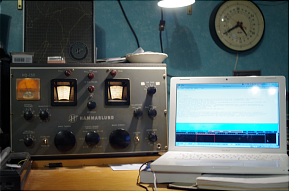The Broadcasting Board of Governors, which oversees the Voice of America and other such services, has issued a report on short wave radio. Bottom line: it isn’t looking great for the BBG’s commitment to the service. From the report:
“The BBG must use shortwave where it is most effective. In the past, shortwave audiences were larger with greater dependency on the platform. However, many shortwave consumers today do not use the medium exclusively. As other platforms, such as FM, television, and the Internet, become available, shortwave users demonstrably migrate quickly to these newly preferred mediums. Today, the audiences are waning and the BBG is faced with diminishing returns in a more restrictive budget environment.”
Bennett Z. Kobb among others has noted that the report does not mention the VOA Radiogram project, which is perfecting the art of using short wave to send texts across the world. We’ve been following Radiogram here for a while, and I hope that the BBG/Voice of America continues to support it. Much VOA activity is about dispensing the USA foreign policy line around the globe, whatever that happens to be the moment. But supporting Radiogram sends a clearer message: ‘Here is a text based technology that you, whoever you are, wherever you are, can use to circumvent dictators, or to get around weather disasters or other impediments to communication. By continuing to fund Radiogram, we support the promulgation of as many platforms as are necessary to maintain transparency, communication, and freedom in all contexts around the world.’
Speaking personally, I think it’s a more enduring message than this week’s official line on Ukraine.
Kobb and librarian Christopher Rumbaugh have filed their own joint statement with the BBG. Here’s an excerpt:
BBG should:
1. Capitalize on Radiogram as a circumvention tool, readily consumable by mobile devices. It should integrate Radiogram into its media strategy and networks.
2. Retain, but reconfigure as necessary its HF [shortwave band] facilities in view of the potentially lower costs and greater efficiency of Radiogram when compared to conventional sound broadcasting.
3. Support the development and wide distribution of simple, usable, open-source Radiogram decoding applications for popular mobile devices and platforms (Android, iOS, Windows, Mac, Linux), derived from the free Fldigi software used worldwide
More from the SWLing Post.



